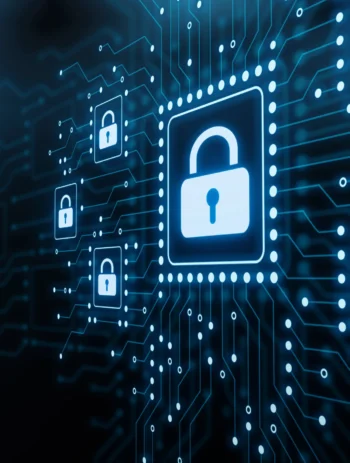Data security is a crucial aspect of managing any office, no matter the size or industry. As an office manager, ensuring that your organization’s sensitive information is protected from breaches, leaks, and unauthorized access is a top priority. Here are some best practices for data security to help you safeguard your office’s data effectively.
Understand the Risks
The first step in data security is understanding the potential risks. Data breaches can occur due to various reasons, including weak passwords, phishing attacks, malware, and insider threats. Knowing the types of threats your office might face will help you implement the most appropriate security measures.
Implement Strong Password Policies
Weak passwords are one of the most common vulnerabilities. Ensure that all employees use strong, unique passwords for their accounts. A strong password typically includes a mix of upper and lower case letters, numbers, and special characters. Consider using a password manager to help staff generate and store complex passwords securely. Also, enforce regular password changes to add an extra layer of protection.
Use Multi-Factor Authentication (MFA)
Multi-Factor Authentication (MFA) adds an additional layer of security by requiring users to provide two or more verification factors to access an account. This can include something they know (a password), something they have (a security token or smartphone), or something they are (biometric verification like fingerprints). Implementing MFA significantly reduces the risk of unauthorized access.
Regularly Update Software and Systems
Keeping your software and systems up-to-date is vital for data security. Regular updates often include patches for security vulnerabilities that could be exploited by hackers. Ensure that all operating systems, applications, and security software are updated regularly. Set up automatic updates whenever possible to streamline this process.
Encrypt Sensitive Data
Encryption is the process of converting data into a code to prevent unauthorized access. Encrypting sensitive information, both in transit and at rest, ensures that even if data is intercepted or accessed without authorization, it cannot be read or used. Use encryption tools for emails, files, and any other data that needs to be securely transmitted or stored.
Educate Your Team
Human error is a significant factor in many data breaches. Regularly educate your team on data security best practices, including recognizing phishing attempts, avoiding suspicious links, and the importance of securing devices. Create a culture of security awareness where employees feel responsible for protecting sensitive information.
Implement Access Controls
Not all employees need access to all data. Implementing access controls ensures that individuals only have access to the information necessary for their role. Use the principle of least privilege, granting the minimum levels of access needed to perform their job functions. Regularly review access rights and adjust them as needed.
Backup Data Regularly
Regularly backing up data ensures that you can recover information in the event of a data breach, system failure, or other incidents. Store backups in a secure, offsite location and test them periodically to ensure they can be restored when needed. Having a robust backup strategy minimizes downtime and data loss.
Develop an Incident Response Plan
Despite your best efforts, data breaches can still occur. Having an incident response plan in place helps you respond quickly and effectively to security incidents. Your plan should outline the steps to take in the event of a breach, including who to notify, how to contain the breach, and how to recover compromised data. Regularly review and update your incident response plan to ensure it remains effective.
Monitor and Audit Systems
Regular monitoring and auditing of your systems can help detect suspicious activity early. Implement tools and processes to continuously monitor network traffic, user activity, and access logs. Set up alerts for unusual behavior and conduct regular audits to identify potential vulnerabilities.
Use Secure Communication Channels
Ensure that all internal and external communications involving sensitive information are conducted through secure channels. Avoid using personal emails or unsecured messaging apps for work-related communications. Instead, use encrypted email services, secure messaging platforms, and virtual private networks (VPNs) for remote access.
By implementing these best practices, you can significantly enhance the data security of your office. Remember, data security is an ongoing process that requires vigilance, regular updates, and continuous education. By staying proactive and informed, you can protect your office’s sensitive information and maintain the trust of your clients and employees.
